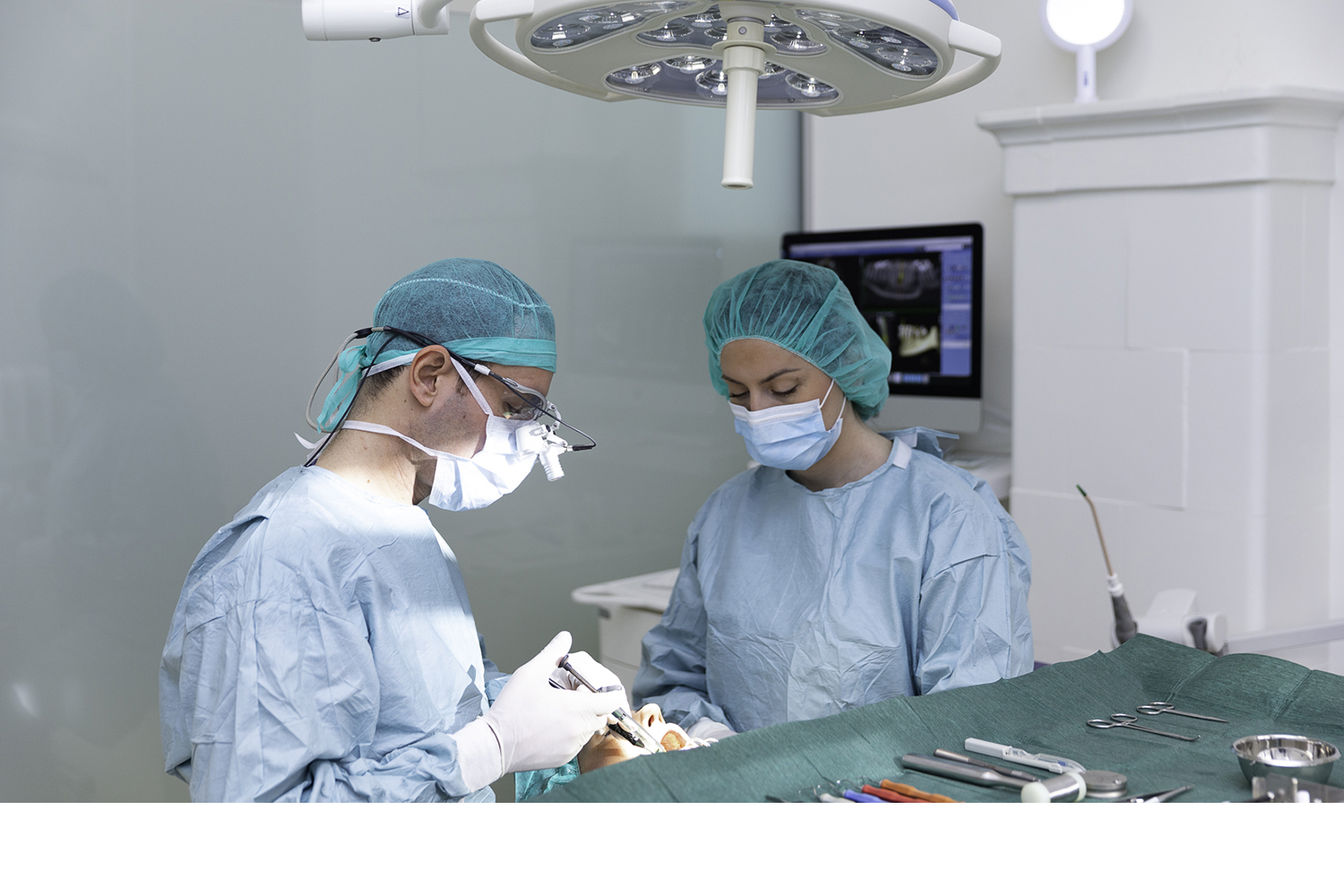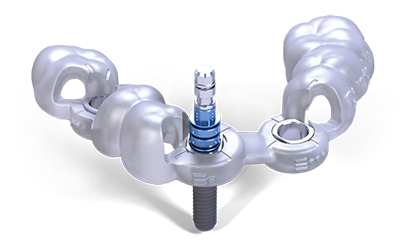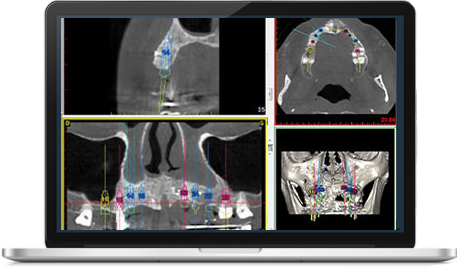Guided implant surgery
Placement of dental implants with the aid of a surgical guide
Dental implant placement and guided surgery
The surgeon usually places dental implants using landmarks and measurements in your mouth. However, it is also possible to use a digital tool to virtually plan the implant position on software before the surgery. Then, we create a drilling guide based on this planning.
This guide, called a surgical guide, is then placed in your mouth exactly in the planned position. With this guide, we perform the drilling and implant placement precisely, ensuring optimal placement in accordance with the initial planning.
Advantages and disadvantages of guided implant surgery
The advantages of guided implant surgery are:
- The available bone volumes are optimized, which can avoid the need for bone grafts.
- The positioning of dental implants is precise, which is a definite advantage in complex and/or risky cases.
- Dental implants can be placed without having to lift your gums.
- In some cases, a temporary implant-supported prosthesis can be fabricated even before the dental implants are placed.
The disadvantages of guided implant surgery are:
- The guide takes up space in your mouth, making the placement of the drilling burs more complex.
- If the bone quality is not optimal in the area chosen during planning, the guide must be removed, and the procedure continued without it.
- If bone or gingival volume corrections are necessary, the guide must be removed to perform the grafts, thus losing most of its advantages.
- The cost of the guide is an additional expense on top of the dental implant cost.
Treatment protocol in guided surgery
We follow a specific protocol for the placement of dental implants through guided surgery:
Planning
During the pre-implant consultation, we virtually position the implants using specialized planning software. We record your 3D radiographic image (cone beam) and the digital impression of your jaws in this software.
Manufacturing
Once we have reviewed and approved the project, we send the data to a specialized milling center. The center mills a custom surgical guide from a biocompatible material and then sterilizes it. We can also fabricate a provisional prosthesis (crown or bridge).
Surgery
On the day of your surgery, we place the guide on your remaining teeth or screw it onto your jaw. We perform the drilling through the guide and place the dental implants. Then, we remove the guide and immediately screw in the pre-prepared provisional prosthesis.
When to use a surgical implant guide?
First of all, we advise you on the use of surgical guides.
These additional tools allow the surgeon to optimize the three-dimensional positioning of the implants. However, it is important to note that they do not replace the clinical experience of a practitioner.
Thus, whether we use a surgical guide or not, we always adhere to the fundamentals of implant surgery to ensure the longevity of the implants. Indeed, the surgeon’s expertise remains essential to ensure optimal results.















































